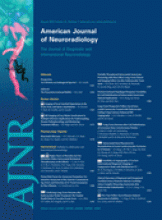Abstract
BACKGROUND AND PURPOSE: Endovascular treatments are being increasingly used in acute ischemic stroke, and better tools are needed to determine which patients may benefit most from these techniques. We hypothesized that specific chronic diseases can be used, along with age and stroke severity, to predict endovascular stroke treatment outcomes.
MATERIALS AND METHODS: Data from 2 single-arm trials of a thrombectomy device, MERCI and Multi MERCI, were pooled for analysis. A predictive score was developed by using the independent contribution of variables in multivariable analysis.
RESULTS: HTN, DM, and AFib were found to predict outcomes. These 3 conditions contribute equally to a CDS that predicts outcomes independent of other predictor variables, including age, stroke severity, and vessel recanalization. A 10-level predictive score, the THRIVE score, which incorporates age, stroke severity, and the CDS, was developed. The THRIVE score strongly predicts outcome and mortality at 90 days.
CONCLUSIONS: Specific chronic diseases influence poststroke outcomes among patients undergoing endovascular stroke treatment, independent of other predictors of outcome. The THRIVE score reflects the contributions of chronic disease, age, and stroke severity and strongly predicts endovascular stroke treatment outcomes.
Abbreviations
- AFib
- history of atrial fibrillation
- ASPECTS
- Alberta Stroke Program Early CT Score
- CAD
- history of coronary artery disease
- CDS
- chronic disease scale
- CHF
- history of congestive heart failure
- Chol
- history of hypercholesterolemia
- CI
- confidence interval
- DM
- history of diabetes mellitus
- GLM
- generalized linear model
- HTN
- history of hypertension
- MERCI
- Mechanical Embolus Removal in Cerebral Ischemia
- mRS
- modified Rankin Scale
- Multi MERCI
- Multi Mechanical Embolus Removal in Cerebral Ischemia
- NIHS
- National Institutes of Health Stroke Scale
- OR
- odds ratio
- PROACT
- Prolyse in Acute Cerebral Thromboembolism
- Pseudo-R2
- pseudo R-squared
- ROC AUC
- receiver-operating characteristic area under the curve
- RR
- risk ratio
- THRIVE
- Totaled Health Risks in Vascular Events score
- Tob
- history of active tobacco smoking
- tPA
- tissue plasminogen activator
- Copyright © American Society of Neuroradiology












